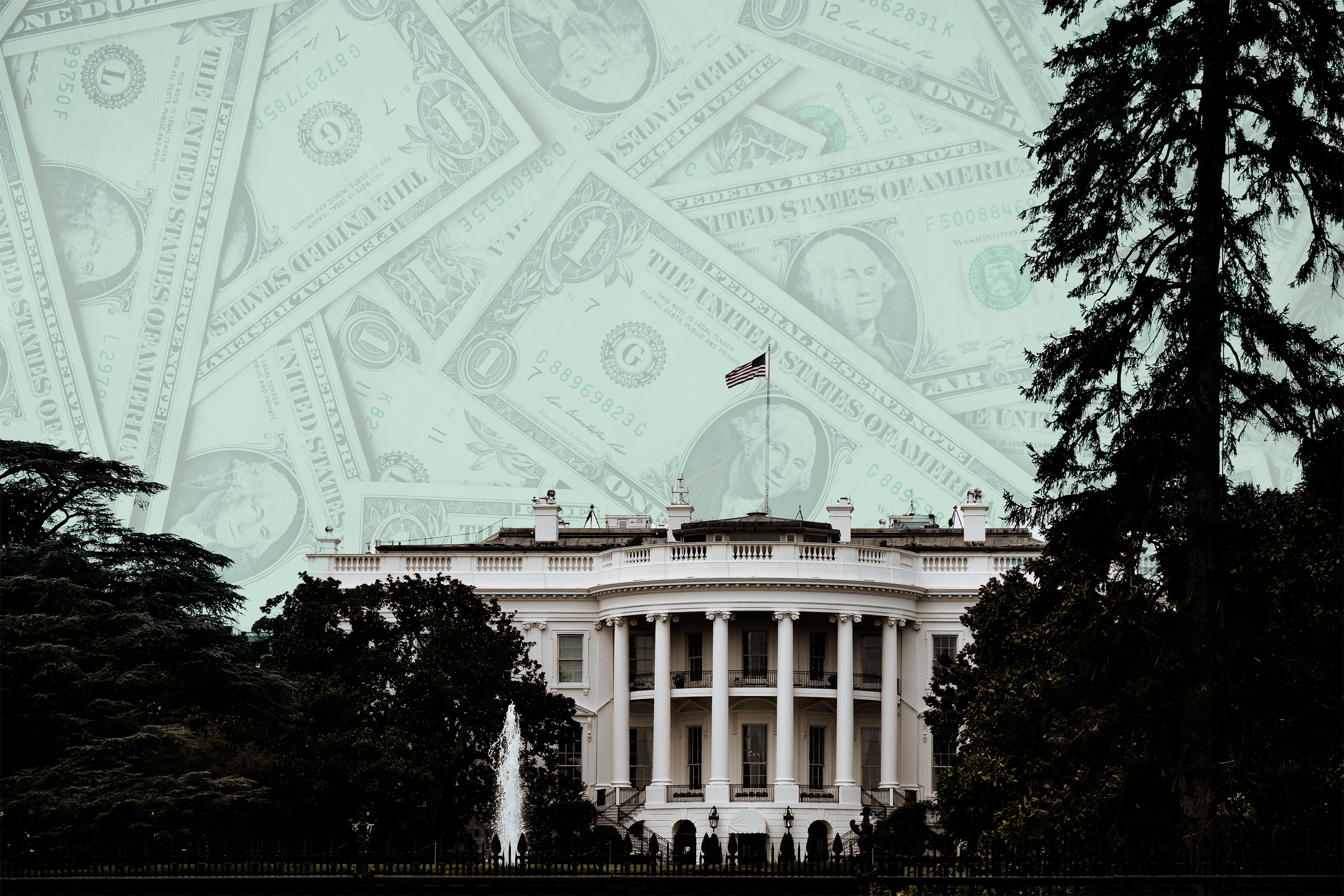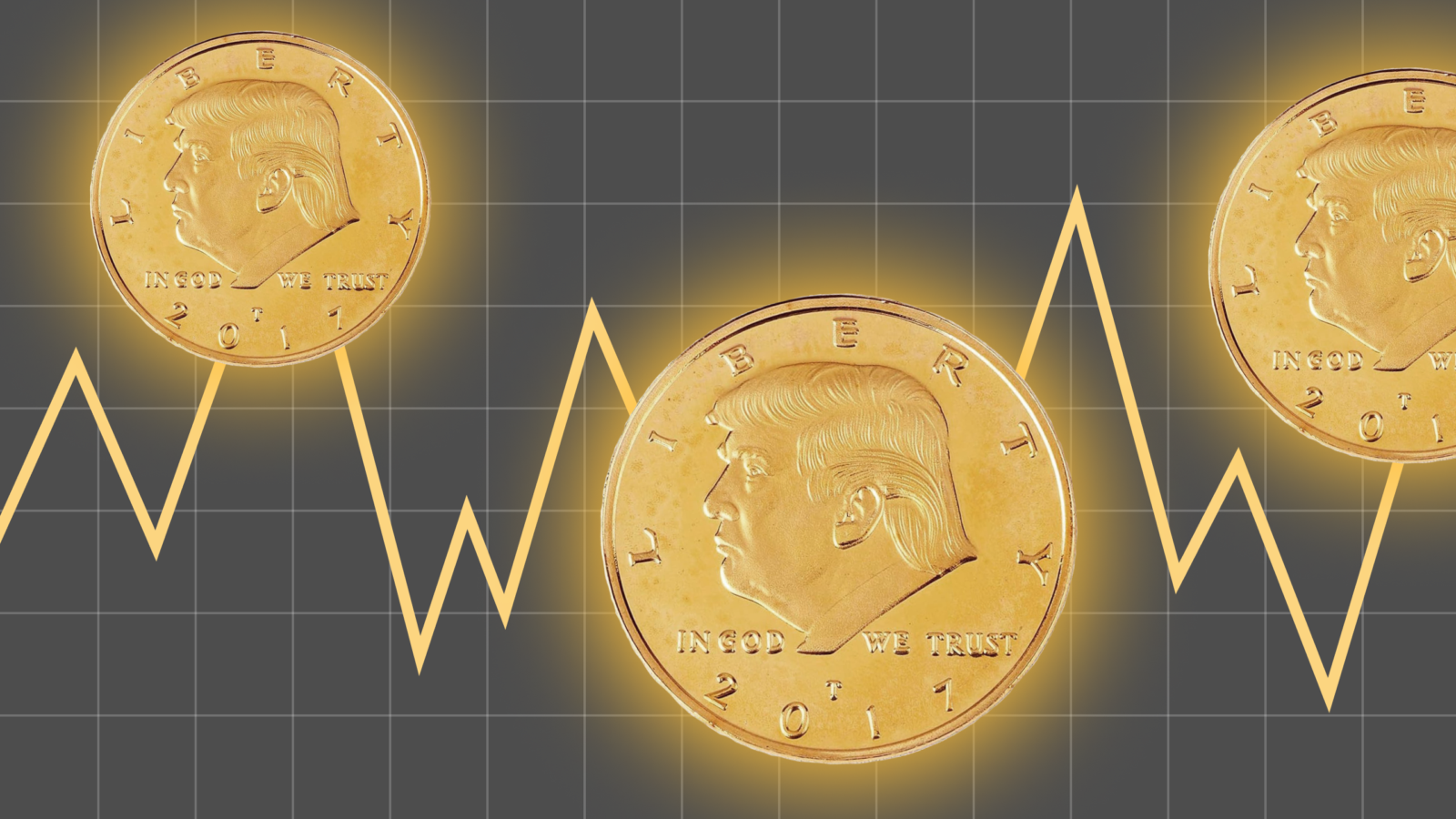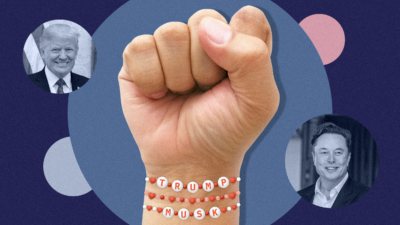A Mountain of Public Money Awaits U.S. Presidential Candidates
The Presidential Campaign Fund’s Hidden Impact on Elections and Beyond.

Sign up to unveil the relationship between Wall Street and Washington.
Ever notice that little section of the U.S. federal income tax form that asks taxpayers if they’d like to donate a few bucks to the Presidential Election Campaign Fund?
Unbeknownst to many, it doesn’t deduct those funds from your tax return. It is simply Uncle Sam asking you, directly (for once), whether you would like the U.S. Treasury to set aside a $3 donation on your behalf to help publicly fund America’s presidential elections.
So, if it’s not coming out of your pocket, of course you want to – right?
According to a chart from the U.S. Federal Election Commission (FEC), fewer than 4 percent of American taxpayers opted to check the box to make a donation in recent years. That percentage hasn’t been in the double digits since the aughts and hasn’t touched the 20 percent mark since the last century. It peaked in 1980 at just 28.8 percent.

Still, even with donations down to a trickle, the fund keeps on growing. It now stands at nearly $400 million, according to FEC data. That’s right, a trove of hundreds of millions of dollars is just sitting in Treasury, free public money, waiting to be used.
Yet no major presidential candidate has tapped it for 15 years – and it is looking increasingly unlikely anyone will.
The first presidential candidate to eschew dipping into the public purse was President Barack Obama in 2008. His Republican opponent, the late John McCain, accepted the federal grant and received full public funding for his $84.1 million presidential bid.
But taking those funds always comes with strings attached. The presidential nominee of a major party has to limit their campaign spending to the amount of public funding they are granted by the government and cannot accept any private contributions. They also can’t spend more than $50,000 of their own personal funds on their campaign.
For McCain, it meant he was completely hamstrung as Obama out-fundraised him to the tune of $745 million and clinched the presidency.
Obama’s rejection of the Presidential Election Campaign Fund marked the first time a major candidate had declined to participate in the public financing system for presidential campaigns since the program began in 1976. He argued that “the public financing of presidential elections, as it exists today, is broken and we face opponents who’ve become masters at gaming the broken system.”
Obama denounced “contributions from Washington lobbyists and special interest PACs [political action committees],” telling supporters that he’d rather take grassroots donations “of $5, $10, $20, whatever you can afford.”
The move represented an about-face for Obama, much to McCain’s chagrin, after the Democratic contender vowed to aggressively pursue an agreement with McCain to “preserve a publicly financed general election.”
Since then, no presidential candidate from a major party has agreed to the terms of the presidential election grant, which, when Congress set it up in the early 1970s, was specifically intended to reduce candidates’ dependence on large donors with the goal of evening out the playing field. The program followed the revelations of the Watergate scandal, which prominently featured corporate moneymen, secret donations, money laundering and illicit financial activities linked to then-President Richard Nixon.
The idea of banning private contributions and setting up a public financing system for elections was first floated by President Theodore Roosevelt in his State of the Union address in 1907. After that, a number of efforts were made by Congress to establish a program to fix the campaign finance system.
In one such piece of legislation in 1966, a Senate bill lamented how voluntary contributions to presidential campaigns from individuals and corporations were repeatedly mishandled and “each time Congress has acted, it has made political campaign financing more difficult” and that “it has become increasingly clear that new methods of financing political campaigns must be found.”
When the Presidential Election Campaign Fund launched in 1976, each major party nominee received $21.8 million.
The search for a better system has spanned a century. As is well known, the U.S. Supreme Court’s Citizen United ruling in 2010 did not help matters by supercharging the inflow of outside money, especially super PACs and 501c tax-exempt organizations, which seek to influence elections with billions of dollars of dark money (read: funds that come from donors who do not have to disclose their identities).
Since then, the money chase has only become more complicated, with both Democrats and Republicans caught in an endless battle to outmatch each other via opaque political nonprofits, shadowy anonymous donors and shell companies.
Before the presidential race of 2020, it was Republicans who largely dominated the dark money dark arts during presidential elections. But in 2020, more than $1 billion of it flooded the system at the federal level, primarily benefiting Democrats and President Joe Biden, according to OpenSecrets, a Washington-based nonprofit that tracks money in politics.
Overall, political spending on the 2020 presidential election totaled $14.4 billion, breaking all records, including the earlier record set in the 2016 presidential election cycle. The massive price tag was fueled by donations from billionaires, as well as a tsunami of small donors’ online contributions to both President Trump and Biden, according to OpenSecrets, which analyzed FEC filings and data.
While Democrats for years have been calling for an end to the campaign finance loopholes, they have only been too happy to exploit them alongside their GOP opponents in the interim. In the 2020 election, liberal groups spent more than $514 million in dark money, outstripping the $200 million reported by Republicans, according to OpenSecrets, also citing FEC data.
Had a presidential candidate opted into the public financing system during the 2020 cycle, they would have received only $103.7 million.
So what now? It seems Democrats continue to lead the way on dark money going into the 2024 presidential election cycle, with OpenSecrets predicting next year will be “the most expensive election cycle in history.”
Already, nonprofits are funneling millions from anonymous donors into super PACs spending on the 2024 race, with Democratic groups again accounting for the lion’s share of the money.

If only the hundreds of millions of public campaign funds collecting dust in Treasury could be put to better use. Certainly the rules could be updated to allow presidential candidates more flexibility to raise funds while also receiving public money?
A spokeswoman at the FEC told Power Corridor the commission does have the authority to change its rules, but added she could not “speculate” as to whether that would ever happen.
In the meantime, only lesser-known party candidates have been dipping into the public funds. But these minor party candidates and new party candidates are only eligible for partial financing in general elections.
That doesn’t really sound like it meets the original intentions of the fund or poses the best use of taxpayer dollars. In fact, it doesn’t even sound like what the 1040 tax form is describing when it asks for presidential campaign fund contributions.
Over the years, critics have contended that the FEC rules surrounding the use of public funds are not just restrictive, but arbitrary, and do not support a robust democracy. Worse, if followed to the letter, the program very likely would make it harder for a presidential hopeful to win. In particular, the hard limits placed on presidential candidates’ personal spending and private fundraising are outdated and wildly unrealistic in light of how competitive races have become. (McCain’s experience being a memorable case in point.)
In a telling postscript, after President Obama won the election in 2008 by favoring private over public funding, he signed an act during his second term in 2014 to reallocate a portion of the Presidential Election Campaign Fund to something more useful: pediatric cancer research.
That means, today, when you check the “yes” box at the top of your form 1040, the funds don’t just go to a presidential campaign fund – they now go toward cancer research for kids.
The views expressed in this op-ed are solely those of the author and do not necessarily reflect the opinions or policies of The Daily Upside, its editors, or any affiliated entities. Any information provided herein is for informational purposes only and should not be construed as professional advice. Readers are encouraged to seek independent advice or conduct their own research to form their own opinions.











